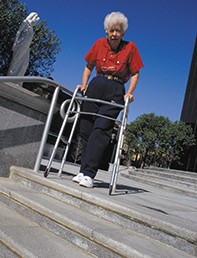Peer Reviewed
Feature Article Endocrinology and metabolism
An update on osteoporosis
Abstract
Simple strategies for the prevention of osteoporosis continue to be underutilised, and a fitter elderly population with higher individual bone mineral density could potentially reduce the incidence of morbidity due to osteoporosis.
Key Points
- Assessment of bone mineral density (BMD) by dual energy x-ray absorbtiometry (DXA) remains the gold standard for diagnosis of osteoporosis.
- General lifestyle measures in the prevention and management of osteoporosis include adequate calcium intake, regular weight-bearing exercise and avoidance of smoking and excess alcohol intake.
- Patients with a previous minimal trauma fracture should receive potent antiresorptive therapy to prevent further fracture.
- In the absence of fracture, treatment decisions should be based on the severity of osteopenia and the presence of other risk factors including age, gender, family history and risk of falls.
- The oral bisphosphonates alendronate and risedronate and the selective oestrogen receptor modulator raloxifene increase BMD and reduce fractures in osteoporotic patients.
- Hormone replacement therapy (HRT) increases BMD but its effect on fracture prevention is less clear. Calcitriol is no longer recommended as first line treatment of osteoporosis.
Purchase the PDF version of this article
Already a subscriber? Login here.

